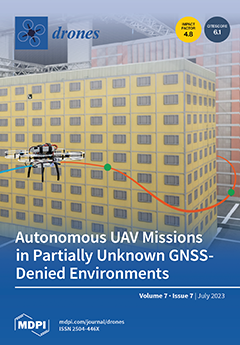We present a novel and first-of-its-kind information-theoretic framework for the key design consideration and implementation of a ground-to-unmanned Aerial Vehicle (UAV) (G2U) communication network with an aim to minimize end-to-end transmission delay in the presence of interference in Space-Air-Ground Integrated Networks (SAGIN). To characterize the transmission delay, we utilize Fano’s inequality and derive the tight upper bound for the capacity for the G2U uplink channel in the presence of interference, noise, and potential jamming. In addition, as a function of the location information of the UAV, a tight lower bound on the transmit power is obtained subject to the reliability constraint and the maximum delay threshold. Furthermore, a relay UAV in the dual-hop relay mode, with amplify-and-forward (AF) protocol, is considered, for which we jointly obtain the optimal positions of the relay and the receiver UAVs in the presence of interference, with straight-line, circular, and helical trajectories as UAV tracing. Interestingly, increasing the power gives a negligible gain in terms of delay minimization, though may greatly enhance the outage performance. Moreover, we prove that there exists an optimal height that minimizes the end-to-end transmission delay in the presence of interference. We show the interesting result of the delay analysis. In particular, it is shown that receiver location and the end-to-end signal-to-noise power ratio play a critical role in end-to-end latency. For instance, with the transmitter location fixed to (0, 0, 0) and the interferer location set to (0, 500 m, 0), the latency generally increases with increasing the receiver’s vertical height (
z-axis). With the receiver’s horizontal coordinates, i.e., (
xR, yR) set to (0, 0) reducing the receiver’s height from 200 m to 50 m decreases the delay latency (codeword length) by more than 30% for an interference-limited channel. Whereas, for an interference channel with a signal-to-noise power ratio equal to 30 dB, the latency decreases by approximately 2%. The proposed framework can be used in practice by a network controller as a system parameters selection criteria, where among a set of parameters, the parameters leading to the lowest transmission latency can be incorporated into the transmission. The based analysis further set the baseline assessment when applying Command and Control (C2) standards to mission-critical G2U and UAV-to-UAV (U2U) services.
Full article





